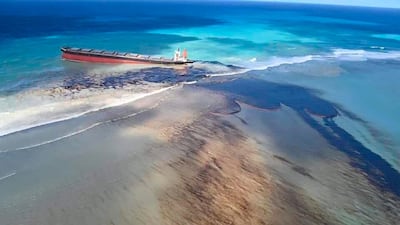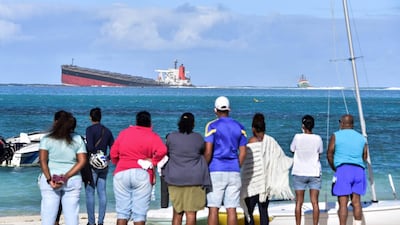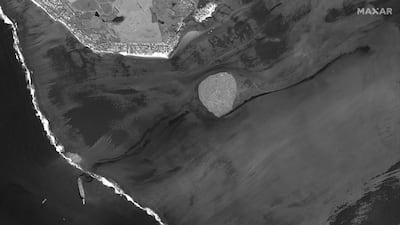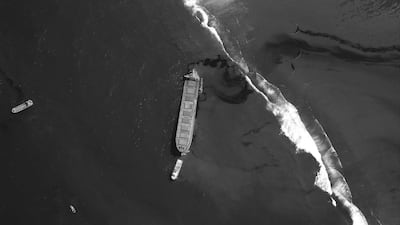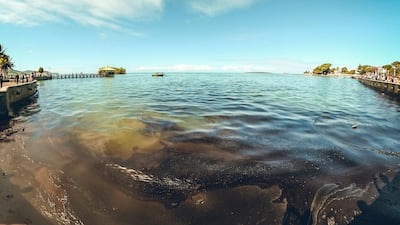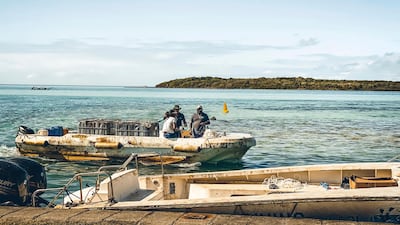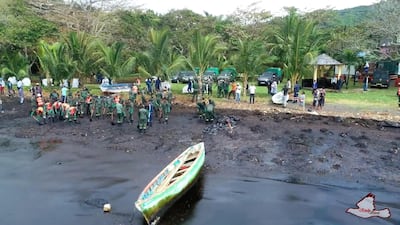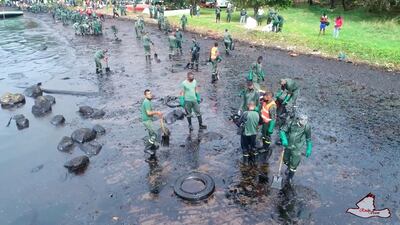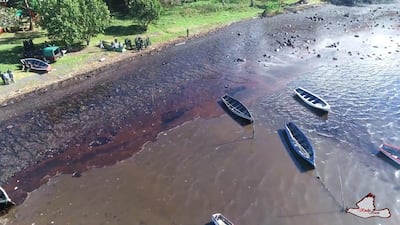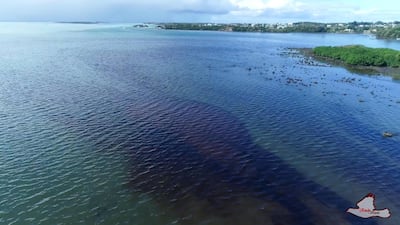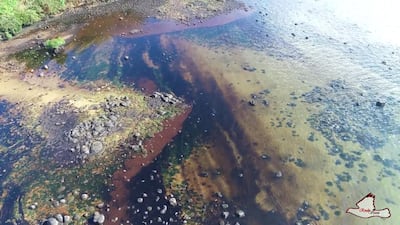Mauritian authorities are in a race against time to pump out the remaining fuel aboard a ship that ran aground off the country’s coast, spilling more than 1,000 tonnes of oil into the Indian Ocean.
They have found help in the form of thousands of volunteers, who have massed at Pointe d’Esny, Mahebourg and other villages on the south eastern coast of the island to clean up the shoreline and help mitigate the spill.
Mauritius has declared a state of environmental emergency as fears grow that MV Wakashio, a Japanese-owned but Panamanian-flagged 300-metre long bulk carrier, could break apart, potentially releasing even more oil into the turquoise waters.
Working day and night, volunteers are constructing floating booms from straw and even human hair, which they are deploying across long stretches of sea to contain the spill. Others have removed more than 400 tonnes of oil and sludge from the lagoon.
The oil spill could have severe consequences for the country’s economy.
Tourism is one of the pillars of the Mauritian economy, employing tens of thousands of people. Over a million tourists arrive on the island every year, attracted by the picturesque beaches and coastal scenery.
But with the tourism sector already in the red as Mauritius closed off its borders in March because of the Covid-19 pandemic, many people who work in the sector are bracing themselves for tougher months ahead.
Josue Dardenne, 42, has a small boat tour business. He says the oil spill could kill off local businesses entirely. “We were already in hardship because of the pandemic, now we have an even bigger problem … Everything is bad. For our fish, our lagoon … we have no customers.”
Most hotels are effectively shut down, with a handful operating as quarantine centres. There are fears that the oil spill will put off tourists even when borders reopen later this year.
But Fezal Noordaully, a taxi operator from Mahebourg, one of the most affected coastal villages of Mauritius, is more optimistic. “Our lagoon here [in Mahebourg] is finished but the oil won't affect our entire coastline. We hope tourists know that and we hope they still come to Mauritius when travelling opens up again.”
The diverse marine ecosystem is also under threat. Mauritius is surrounded by lagoons enveloped by 150 kilometres of coral reef. They were already facing considerable stress due to pollution linked to uncontrolled coastal and industrial development, miscellaneous activities like boating and climate change.
“Marine life is already stressed from human impacts and previous coral bleachings,” says Dr Adam Moolna, an environment and sustainability lecturer at Britain’s Keele University, who travels to Mauritius twice a year. “There have been mass bleachings around the world since 1988 because of higher sea temperatures caused by El Nino.”
According to Dr Moolna, the damage from the oil spill could be “devastating” for the corals.
A coral head the size of a football takes approximately 50 years to grow. Corals much larger than a football will likely die because of the oil spill.
The oil spill could hardly have occurred at a worse place. Within three kilometres from the ship are two protected sites – Blue Bay Marine Park and Pointe d’Esny – areas designated as Wetlands of International Importance. Blue Bay Marine Park spans an area of 353 hectares and is recognised for its coral diversity of at least 38 species but also the presence of mangroves and seagrass meadows.
Mauritius lost nearly a third of its mangrove populations due to coastal developments in the late 1980s. But a concerted effort over the past 15 years has seen 23 hectares of mangrove trees restored along with approximately 230,000 seedlings. They occupy 20 square kilometres of coastline but those at Blue Bay and Pointe d’Esny, which includes the rare red mangrove, are now affected.
“You will see pictures of birds covered in oil, but what you won’t see is the oil that stays in the soil. This can impact mangroves for years,” said Dr Moolna.
Mangroves support a variety of birds and young fish. They are an efficient carbon sink as well, capturing an estimated 10-15 per cent of coastal carbon capture despite covering only 0.5 per cent of coasts.
The oil spill has also surrounded Ile aux Aigrettes, another ecological jewel. The islet off the coast of Pointe d’Esny is home to the last remnants of dry coastal forest that was once ubiquitous around most of Mauritius.
“It is an ecological catastrophe,” says Dr Vikash Tatayah, Conservation Director at the Mauritian Wildlife Foundation (MWF), an independent NGO. “The oil is severely affecting lagoons … and Ile aux Aigrettes.”
Ile aux Aigrettes has been a nature reserve for decades, with 80 per cent of its forests fully restored. It is also home to the Aldabra giant tortoises, a plethora of other rare reptiles, 20 per cent of the world's population of pink pigeons and the Mauritian Fody.
The area is also visited by seabirds. "It's nesting season so many seabirds are flying back to these areas. We are preparing to treat seabirds affected by the oil spill. We've had a plan in place even before the oil spill began."
The full extent of the spill will become clearer in the coming weeks and months. Then will come the restoration work.
MWF has already started recruiting volunteers for longer-term projects via posts on its WhatsApp group. Responses typically appear within seconds. "We are ready to help any time," they say, or "we are here whenever you need us."























